‘If we can’t find them, we can’t protect them’: The race against time to save Julia Creek dunnarts

Julia Creek dunnarts were once thought to be extinct, but now ecologists are on a mission to find and protect them.
Associate Professor Andrew Baker and Dr Emma Gray from the Queensland University of Technology (QUT) School of Biology and Environmental Science are leading the team researching these tiny-but-feisty Australian carnivorous marsupials.
The Julia Creek dunnart (officially known as Sminthopsis douglasi) is one of 18 dunnart species and the only one confined solely to Queensland.
Their population size and distributional range are unknown, but they have been found in the Mitchell grasslands and cracking clay soils of the Julia Creek region, east of Mount Isa in the state’s semi-arid north-west.
A race against time
Professor Baker and Dr Gray’s research focuses on finding the fastest and most efficient ways to locate the elusive Julia Creek dunnart, which is listed as endangered in Queensland.
“It’s a race against time because we are losing so many mammals in Australia,” Professor Baker said.
“We have a biodiversity crisis – a human-caused mass extinction event – so we want to identify the best ways to find these animals as quickly as we can.
“If we can’t find them, we can’t protect them.
“My hope for the bigger picture is that the best detection methods we identify can then also be used to more easily locate and protect populations of other threatened animals.”
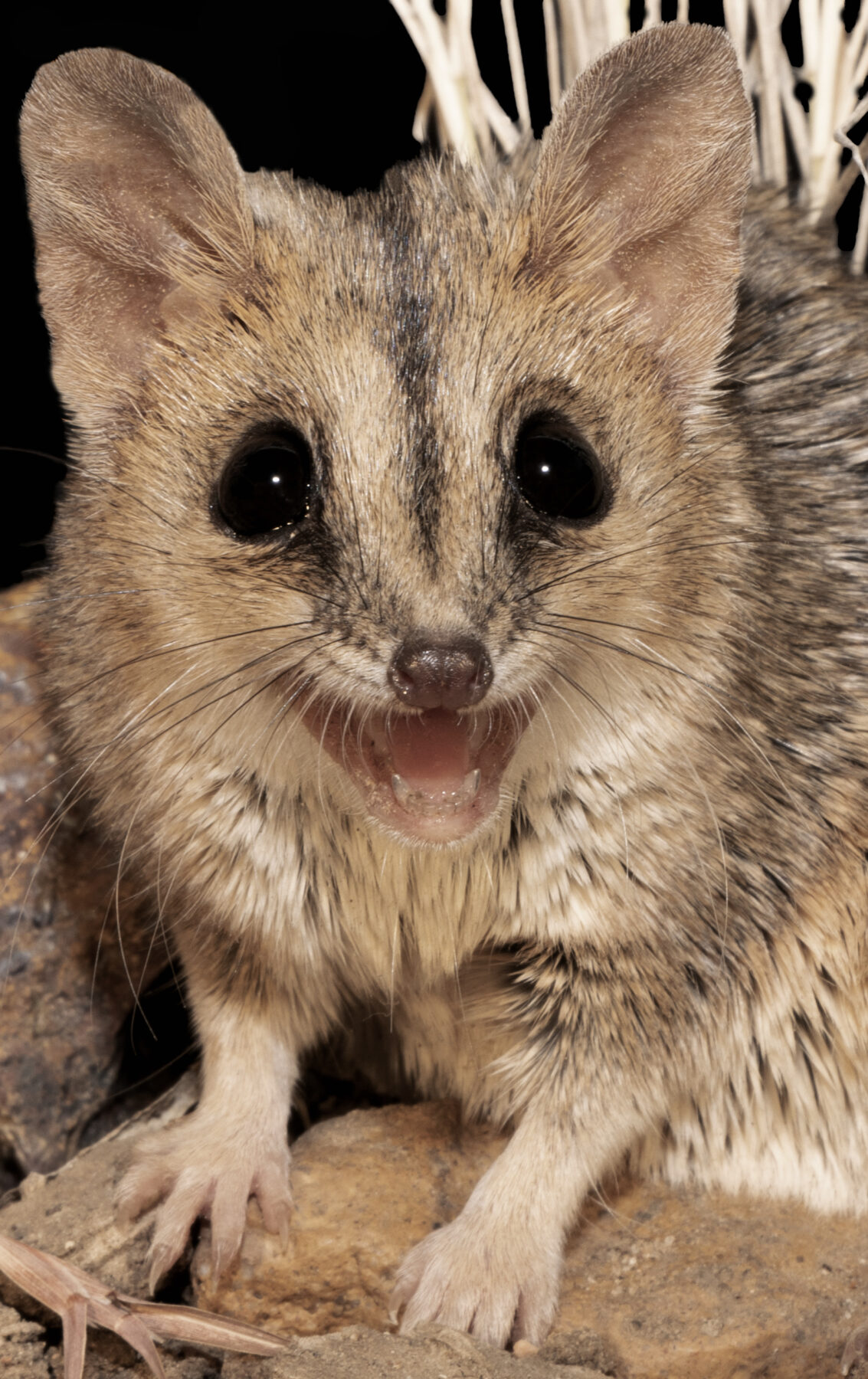

From peanut butter and bacon traps to airborne DNA
Finding dunnarts in the remote Julia Creek landscape is easier said than done.
QUT researchers are using a mix of methods – some are tried and true, but others are new techniques.
The most ‘old school’ method is the faithful Elliott trap, a small metal box, which has a one-way door and is loaded with a tasty treat.
“We use peanut butter and bacon – peanut butter is kind of the universal bait for any sort of small mammal,” Dr Gray said.
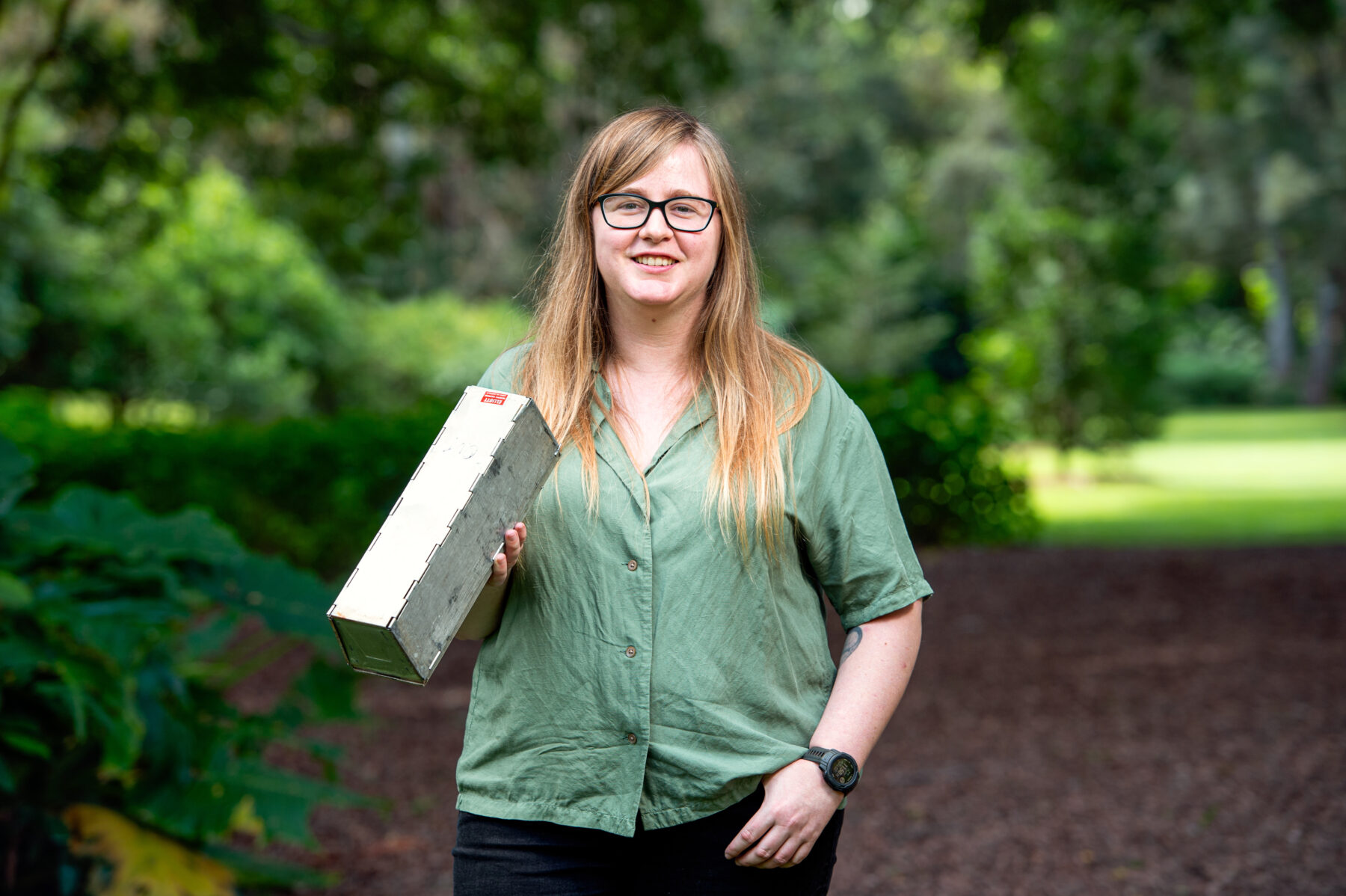
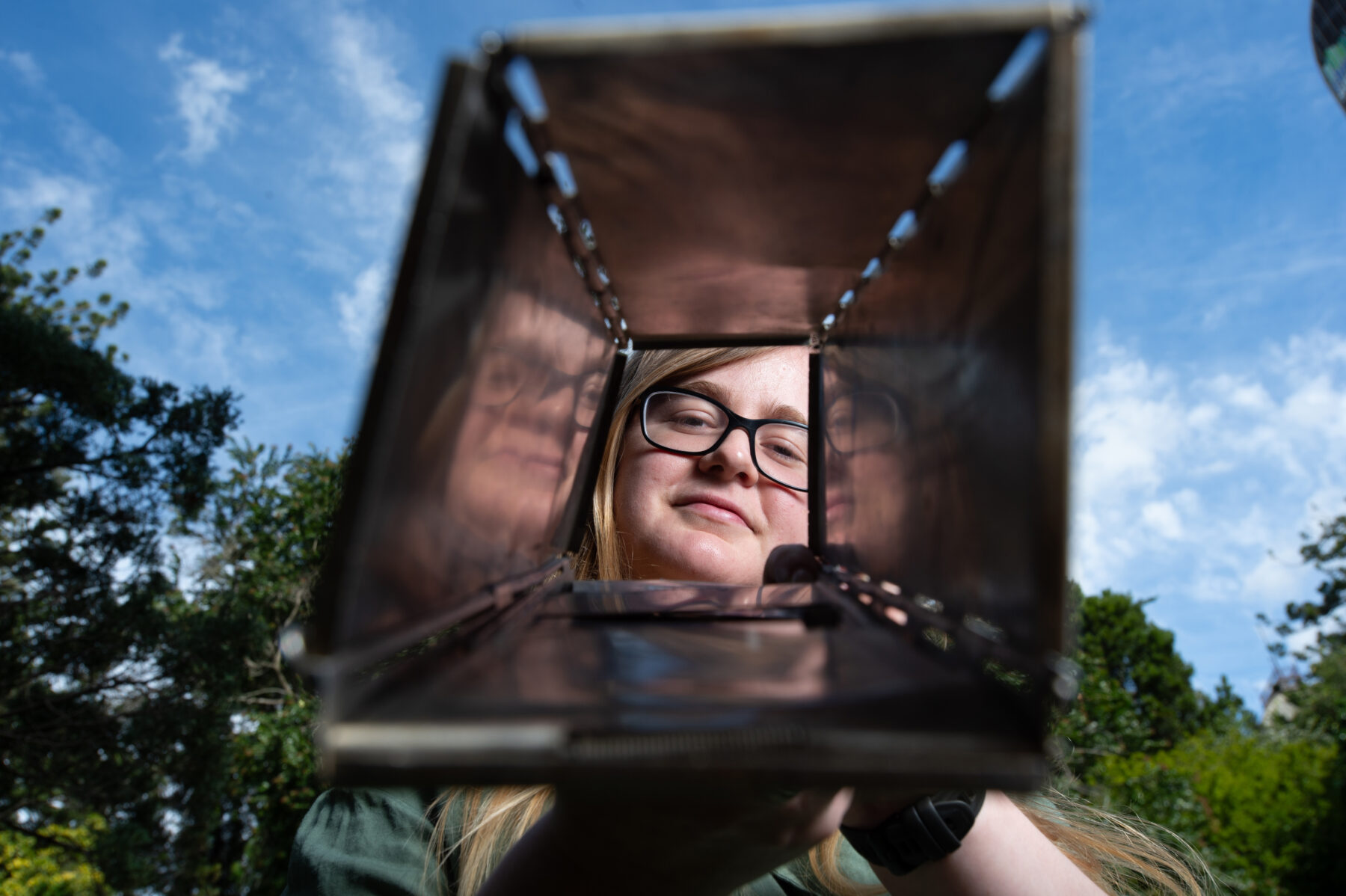
“The traditional method with Elliott traps is great because you get to hold the captured animal in your hand, you can confirm the identification, take measurements, pit-tag them to track recaptures and take tissue samples if needed.
“But the grassland where the Julia Creek dunnart can be found is potentially quite large, and setting Elliott traps everywhere is not practical. To cover that amount of ground we need some more rapid methods.
“One thing we are trying is detection dogs.
“The dogs were trained by Amanda Hancock at Carnarvon Canines for six months off-site, with dunnart odour swabs we had collected.
“We had our first field trial with the dogs in June and it was very successful.
“The dogs passed all their simulated tests in the grassland landscape. And, even better, they were able to detect Julia Creek dunnart odour at the field site. We subsequently set five Elliott traps at the detection site and overnight were able to catch a dunnart, who we examined, named Simba and released.
“It usually takes us hundreds of trap nights and days of effort to catch a dunnart … So, it was an incredibly successful trip and fantastic results with the dogs.”
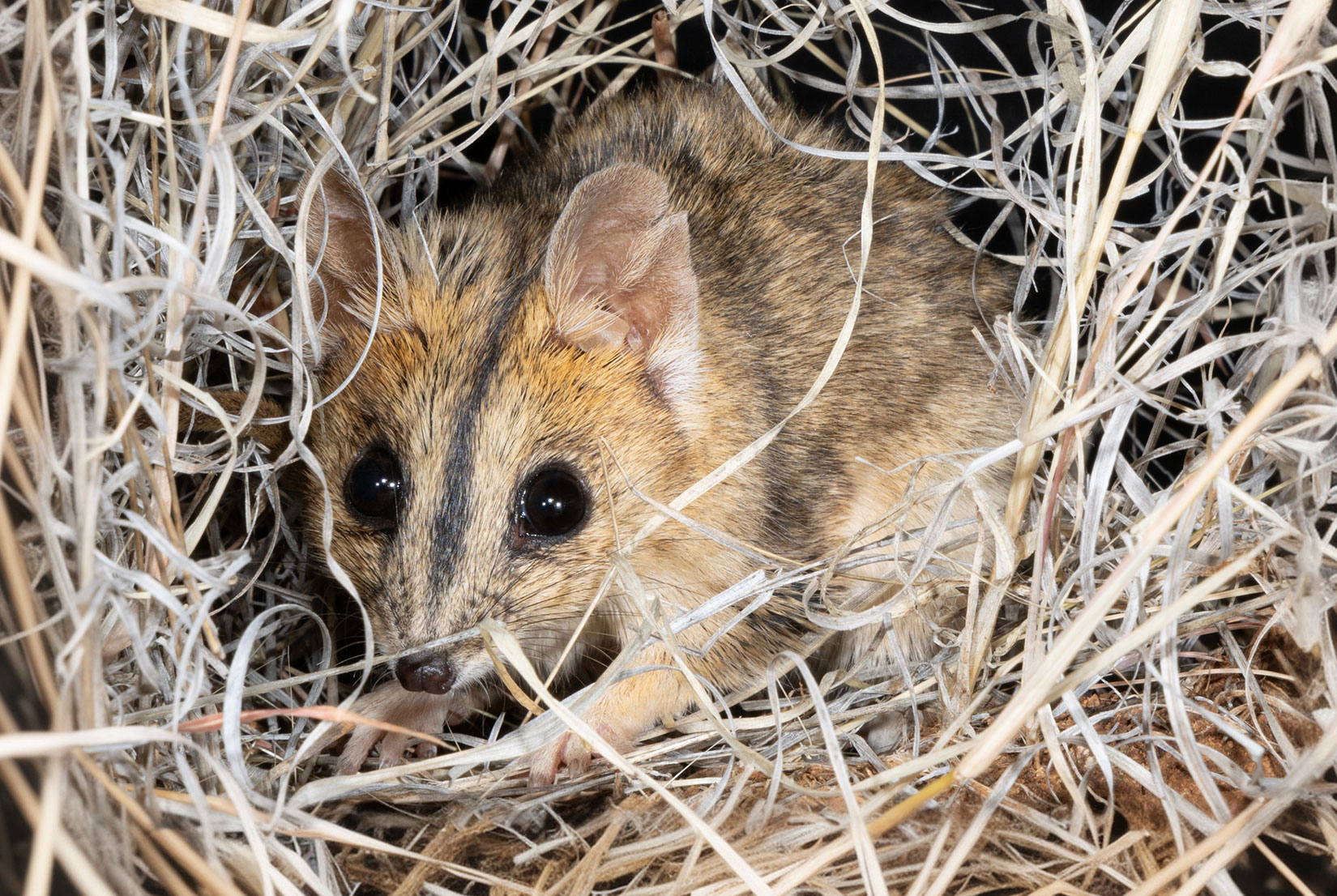
Dr Gray said another method used by the research team involved barn owls, which were natural predators of small mammals.
“They can’t digest the hard parts of mammal skeleton so we sift through the regurgitated owl pellets to see if we can find dunnart remains, which then proves they live in that area,” she said.
In April, the team also trialed environmental DNA (eDNA) filters for the first time.
“They haven’t been used out in the field like this before, to my knowledge – they are usually applied in more controlled environments,” Dr Gray said.
“We put air filters on a star picket with a little computer fan that sucks the air through the filter paper. In theory, DNA of different species floating in the air across the grasslands will get trapped on the filter paper.
“It’s a really exciting method to potentially detect a species via its DNA. But it’s so specialised that we have to send the samples to America to be analysed, so we’re still waiting to find out if it was successful or not.”
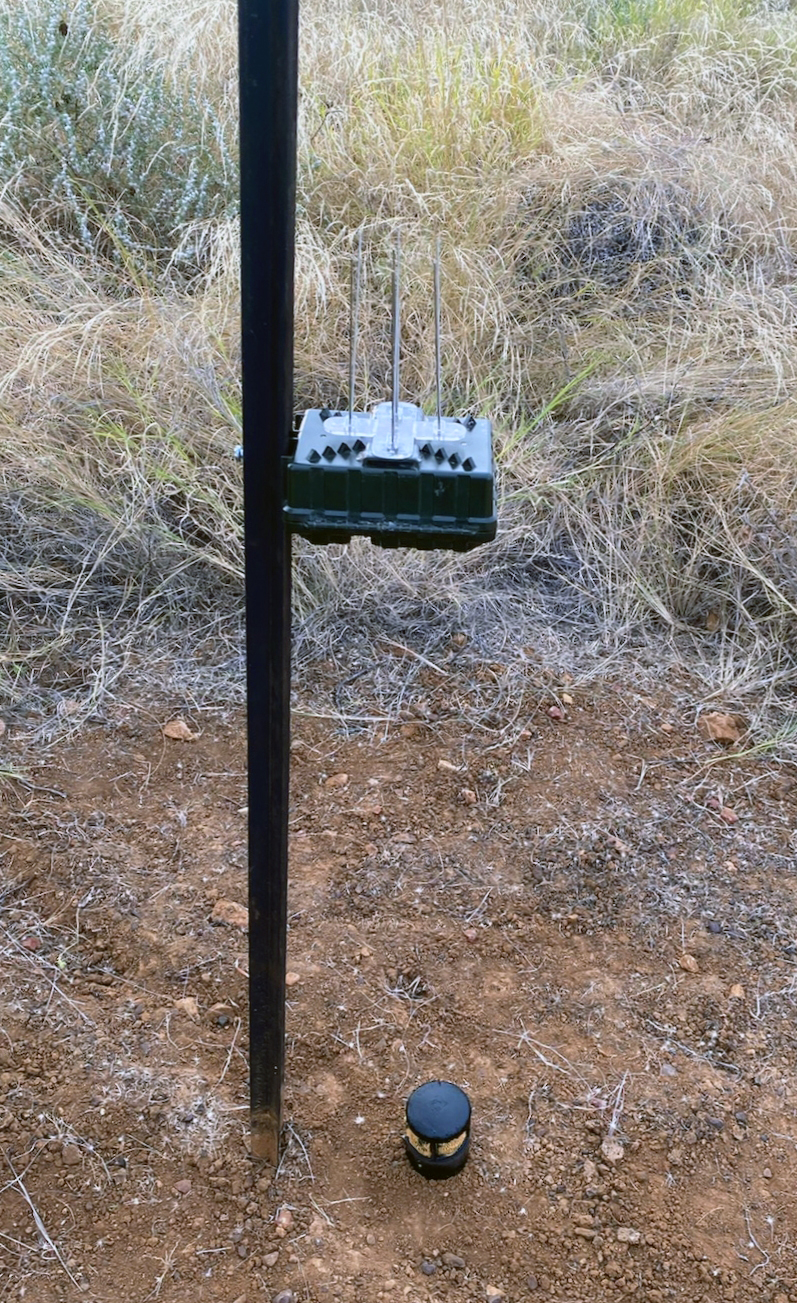

The final method helping in the dunnart search is camera trapping.
“We leave a baited camera out for a month or more that records photos when it’s triggered by an animal attracted to the bait,” Dr Gray said.
“It’s a good method because we don’t have to physically capture the animal to identify it, and the cameras are active every night. Although you then must sort through the photos – sometimes millions of them!”
A natural career path
Dr Gray says she followed a natural career path to the dunnarts’ world.
“I always loved animals,” she said.
“As a kid, I wanted to become a vet. But I did a placement in Grade 10 and quickly realised I didn’t want to operate on animals … I wanted to see them out in the wild in their natural setting.
“I had a really good science teacher in high school and he introduced me to the idea that ecology could be a job.”
Dr Gray went on to study a Bachelor of Applied Science at QUT, majoring in ecology, and then an Honours and PhD with Professor Baker as her supervisor.
After that, she worked as an ecological consultant in Dubbo and Brisbane.
“But I’d kept in touch with Andrew over the years and one day he took me out to lunch and said he had some funding for this Julia Creek dunnart project and invited me to apply as a postdoc,” she recalled.
“I jumped at the chance because I really love small mammals – that’s what I’m passionate about.
“I think academia is probably one of the only jobs where you have the time to delve deeply into questions. It’s really a curiosity thing for me. You are trying to answer those fundamental questions about a species – where they occur and what they do.
“Dunnarts are so cryptic – and I find that fascinating.

“They are generally nocturnal, so not a lot of people see them – they shelter in soil cracks and are really hiding in plain sight.”
Professor Baker, like many ecologists, credits David Attenborough documentaries for inspiring him as a child.
“Mammals drew me from a young age via TV – I guess they are furry and sometimes cute, but other times ferocious,” he said.
“At the end of Year 12 in 1987, I was torn between science and archaeology. I was enthralled by the Indiana Jones movies, so I naturally chose the latter.
“But I lasted just six weeks in the course, faced with a range of dry texts and nary a primeval underground lair stocked with artefacts in sight. So I dropped out.”
He then worked and travelled for a while, before starting a science degree at QUT in 1990. He studied mammals in his third year, fish behaviour in his honours year and bird genetics for his PhD.
“In 1998, after completing my doctorate, I landed a part-time job at the Queensland Museum and met someone who would change my life – Dr Steve Van Dyck (one of Australia’s best mammal taxonomists),” he said.
“I ended up back at QUT as an academic in 2004. Several years later, Steve interested me in some antechinus projects, and I have been full steam ahead on mammals ever since.”
This article was first published on QUT Real Focus and is republished here with permission.



